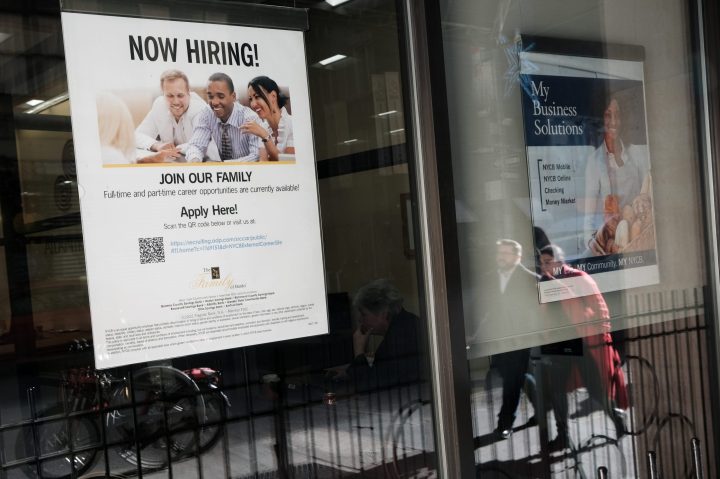
According to at least one statistic, the job market seems to be cooling
According to at least one statistic, the job market seems to be cooling

We learned last week that the economy added 263,000 jobs in November, according to the Labor Department. The unemployment rate stayed at 3.7%, and average hourly earnings were up 5.1% over the last year.
All of which suggests the labor market is still really tight. But there are some signs that suggest it could be loosening — including a statistic called the diffusion index.
To calculate its diffusion index, the Labor Department breaks the economy up into 256 industries, and the index is basically the percentage of those industries that are adding jobs. So, if the percentage is over 50, more industries are hiring than letting people go. In November, it was 63.5.
Betsey Stevenson, an economics professor at the University of Michigan, said the index tells us whether the economy is growing evenly. “So are all industries growing? Or are only a few industries growing?”
For instance, when the pandemic started, the diffusion index crashed to the single digits.
But when the economy started coming back online, it shot up into the 70s.
“More industries than normal were hiring, so the gains were happening in a much more diffuse way. That’s why we call it a diffusion index,” Stevenson said.
The index is still averaging higher than it did before the pandemic. Michael Pugliese, an economist at Wells Fargo, said that’s because a lot of industries are still trying to hire.
“It has been some industries playing catch up, right? Other ones that have seen surging demand since the pandemic began, and they’re seeing outright growth relative to where they were before COVID,” he said.
But in the last year, the index has been trending down. Pugliese said that’s because other industries aren’t seeing that surging demand anymore.
So, they’re shedding jobs. Last month, for example?
“Retail trade employment was down a little bit. Transportation and warehousing was down a little bit. That’s been a really hot one for the better part of this pandemic,” Pugliese said.
The diffusion index is still above its average over the 10 years before the pandemic, said Kathy Bostjancic, chief U.S. economist at Nationwide.
“So we probably have a ways to go for that diffusion index to decline,” she said.
Bostjancic said it’s likely the index will keep declining. “Down the pike, new orders are slowing, and companies have to start to prepare for the prospect of recession,” she said.
If the diffusion index ends up heading down towards 50, Bostjancic said that might mean a recession is coming.
There’s a lot happening in the world. Through it all, Marketplace is here for you.
You rely on Marketplace to break down the world’s events and tell you how it affects you in a fact-based, approachable way. We rely on your financial support to keep making that possible.
Your donation today powers the independent journalism that you rely on. For just $5/month, you can help sustain Marketplace so we can keep reporting on the things that matter to you.











